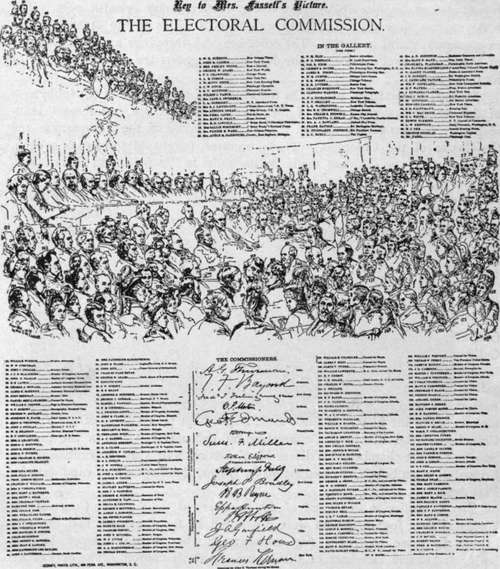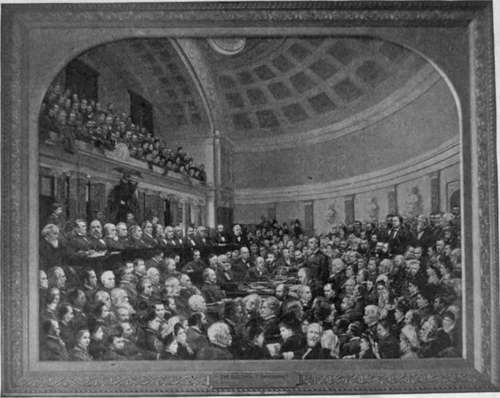Electoral Commission
Description
This section is from the book "The National Capitol. Its Architecture Art And History", by George C. Hazelton, Jr. Also available from Amazon: The National Capitol Its Architecture Art and History.
Electoral Commission
On the eastern wall of the lobby of the Senate gallery, above the reception room, is an interesting picture by Cornelia Adele Fassett, painted from life in 1877-78. It represents one of the most important scenes in the history of the United States—the presentation of the Florida Case before the Electoral Commission on February 5, 1877, in the present Supreme Court chamber. William M. Evarts of New York is addressing the Commission on behalf of Rutherford B. Hayes, the Republican candidate for President.
The Commission consisted of five members of the Supreme Court of the United States, four of whom were appointed by the President and the fifth chosen by these four ; of five members of the Senate, elected by that body; and of five members of the House, similarly chosen. The eyes of all the people of the nation were upon these fifteen men. They were to determine the validity of the electoral votes from Florida, Louisiana, Oregon and South Carolina, from which States two distinct sets of returns had been received by the President of the Senate. On their decision hung the question whether Hayes or Tilden should be President of the United States.
Though the honesty of the Commission has never been doubted except in the heat of partisan expression, it is interesting to note that no one, even of the five justices of the Supreme Court, voted otherwise than according to his life-long political convictions; and a member of the present bench has been heard to tell with great unction how a much respected judge, who sat on the Commission and who never had a dishonest thought in his life, remarked seriously to a brother justice that the members of the party to which he did not belong had voted according to their partisan convictions—seemingly totally unconscious at the time of the fact that the members of his own party had been equally true to their party affiliations.


ELECTORAL COMMISSION.
The picture cost the government $7,500, and will continue to grow more and more valuable because of the admirable collection of portraits which it contains.
Continue to:
